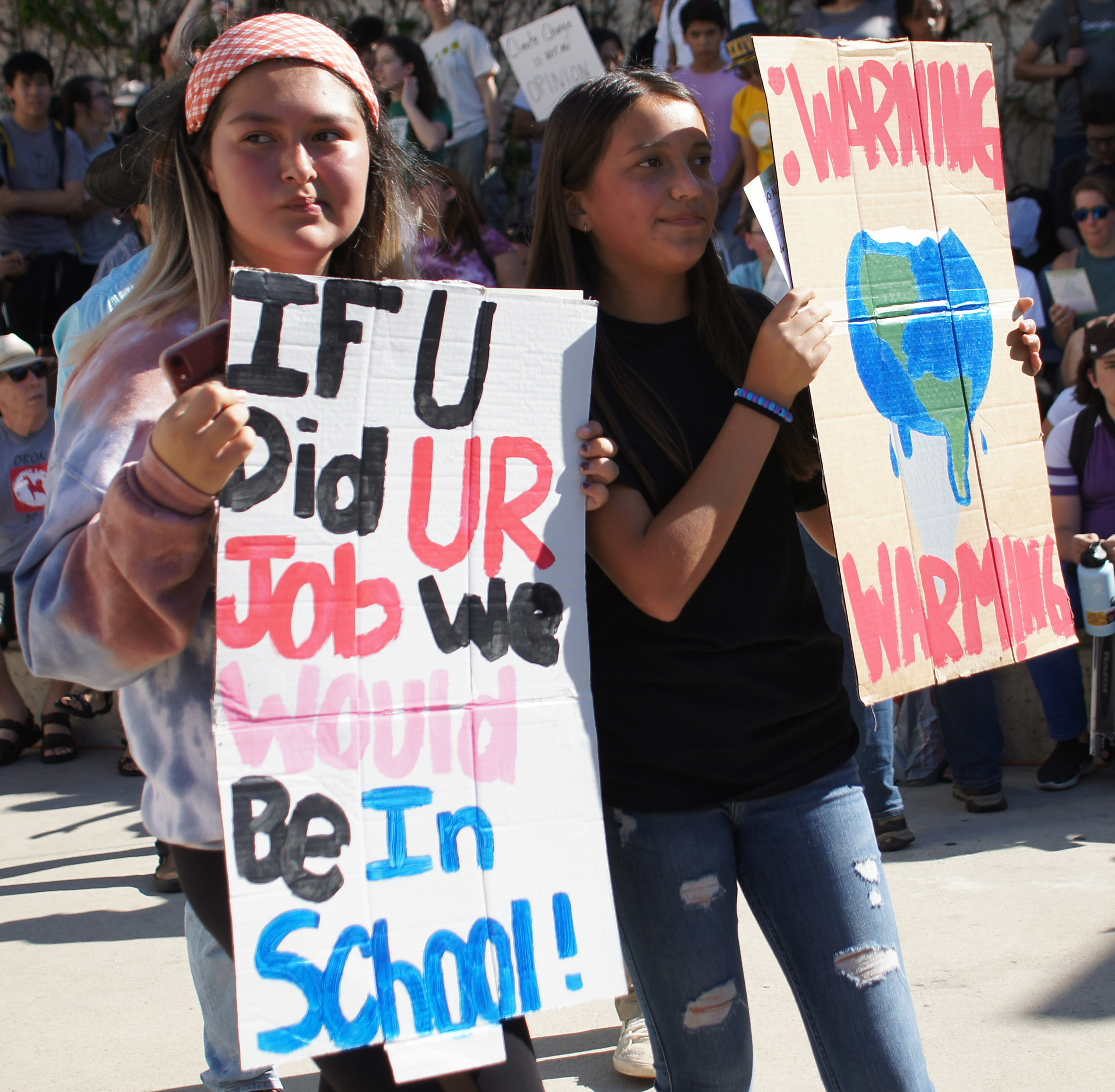
Students leave school to attend climate strike at San Jose and San Francisco

On Sept. 20, 30 Aragonstudents left school at the beginning of lunch to join thousands of protestors at the Silicon Valley Youth Climate Summit. Aragon’s participants took Caltrain from San Mateo station to Diridon Station in San Jose before meeting students, parents and politicians from all around the Bay Area. The crowd marched about a mile to San Jose city hall, shouting phrases like “fossil fuels have to go,” and “this is what democracy looks like,” blocking a lane of traffic on Santa Clara Street. The crowd eventually gathered around several speakers, chanting and singing outside the City Hall.
The protests in San Jose, inspired by the many occurring across Europe, also took place across the Bay Area and the world. Several news stations, including ABC7 and NBC Bay Area, joined the marches to cover the protest. The global movement aimed to raise awareness of climate change and an upcoming UN climate summit, as well as pressure local government to adopt environmentally conscious policies. Many of the protest’s participants were frustrated with the current pace of legal action regarding climate change.
“I just feel like currently, we’re not doing enough about climate change,” said Aragon senior Andrew Young. “It’s an issue that affects the entire world and the United States is a massive contributor to it. So we need to have stronger legislation to protect the Earth.”
Liam Swanson, a junior at Santa Clara University, also felt that partaking in the march was their obligated duty.
“Science shows that we have a limited time [and] the clock’s ticking,” Swanson said. “So I’m going to do my part, and I hope everyone else does theirs.”
On Sept. 11 leading up to the strike, San Jose declared a “climate emergency,” prompting the adoption of policies to stop climate change. Three days before the strike, the city of San Jose unanimously adopted new construction codes, ruling that all new buildings must be electric, and encouraged the implementation of solar energy, possibly in response to the demands proposed by the Silicon Valley Youth ClimateSummit.
Aragon senior Justin Huang, vice-president of Citizens Climate Lobby Club organized the logistics and advertising of the strike and collaborated closely with juniors Daniel Arad and Sian Bareket from Nueva High School.
“It was a lot of hours of meeting, calling and negotiating and hammering out a list of demands [for the strike]. So that was pretty [much] half of what I did with Sian, my co-lead,” Daniel said. “The other half was outreaching at Nueva itself, which involved a lot of recruiting people to do digital design.”
Huang and the CCL Club struggled to find willing participants, due to the consequences of missing two periods of school.
“You’d be surprised how many people are unfirm in their choices,” Huang said. “There are a lot of people who are like: ‘maybe I’ll go.’ It was hard to get a lot of peopleto say ‘yes’… [because of] the truancies and everything with [skipping] two periods.”
Aragon’s administration legally could not allow students to skip school without punishment. Every student that participated in the strike received a truancy. Although a truancy does not warrant any disciplinary action, it can be recorded on a student’s attendance record if unexcused by a parent or guardian. Additionally, Aragon could not allow the strike to be advertised on school property, including through school messages and emails.
“The school doesn’t condone [the strike],” Huang said. “So we [couldn’t] advertise [the strike]… [we got] out our information mainly in person.”
Nueva High School faced similar problems with their administration.
“Outreaching at Nueva itself involved… alternative marketing when [the school] can’t send out all school emails and things like that,” Daniel said.
Despite the challenges, students were positive about the experience.
“It was really exciting. Everybody was yelling and screaming and chanting,” Huang said. “Other than that, just like seeing everybody there … [and] the Nueva people we coordinated with it was just, it was all very, very satisfying.”
